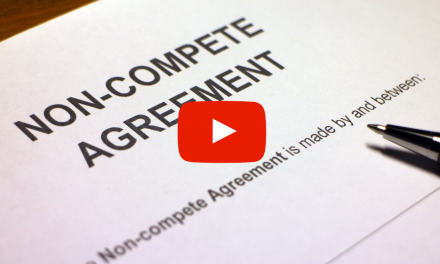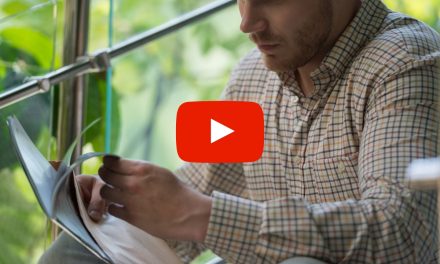
WHAT’S THE REAL PROBLEM HERE?

Recently, I had the opportunity to interact with several young providers. One occasion stands out.
Several months back I had a young doctor shadow me in the office. No doubt this doctor will be an outstanding provider one day, and I will be very proud to call him a colleague. After a patient appointment, the doctor asked me how I determined what the treatment plan would be – a simple question. I responded in kind with a simple answer that the treatment plan was based on the findings. The young doctor looked puzzled.
Diving into this further, we discussed the patient visit from start to finish, breaking down the whole process in great depth. The pertinent case history is that the patient had L plantar foot pain and L heel pain.
The Pain Was:
- Worse: First thing in the morning, at the end of the day, after long periods of sitting/immobility, after long periods of loading (standing/walking/etc.)
- Better: After periods of loading (standing/walking) & after periods of rest
The pain ranged at different times from:
- Dull, ache at rest
- Tension or tightness at rest and after long periods of loading (standing/walking/etc.)
- Sharp/stabbing pain immediately getting up from long periods of rest and after long periods of loading (standing, walking, etc.)
- Burning after long periods of loading (standing, walking, etc.)
Sounds like plantar fasciopathy, right? Well, please look again. The “classic” pattern doesn’t exactly fit. The pain is both better and worse with long periods of standing and with long periods of rest.
The pertinent orthopedic exam looked like this:
- + Heel Pound Test: Increased pain at the bottom of the heel with impact
- + Toe Walk: Increased plantar foot pain with no neurological deficits
- + Heel Walk: Increased heel pain with no neurological deficits
- – Heel Squeeze Test: No increased pain reports.
- + Tinel’s Test: Increased “burning” and reports over the medial calcaneus, medial foot and into the plantar heel
- + Posterior Tibial Neurodynamic Test (Medial Calcaneal Nerve): Increased and more intense “stretch” reports without reports of burning or tingling in the medial calcaneus, medial foot or plantar heel.
- Past Hx: The patient couldn’t remember but suspects he had a L sided plantar heel spur.
Put the pieces together now, and what does the puzzle look like? Is this plantar fasiopathy? Is this heel spur syndrome? Is this posterior tibial neuritis? Is this something else? Is this an abnormal presentation of one of these diagnoses? Could it really just be all 3 diagnoses at the same time?
The answer to these questions is the latter:
The patient presented with 3 diagnoses at the same time. Each diagnosis needs to be accounted for in the treatment plan, and THAT is where the confusion lay. I think the young doctor was programmed to diagnose and treat each condition individually, but since this wasn’t a textbook case of any one of those three diagnoses, he didn’t consider the possibility that multiple diagnoses are a possibility. Let’s face it, patients aren’t necessarily “textbook.”
When talking to the young doctor about the treatment plan, it was clear he had a grasp of the evidence-based guidelines for assessment and treatment (1,2,3,4). At first, he wanted to load (exercise) the tissue. Loading would involve stretching, self-mobilization, self-myofascial release, activation exercises for the foot/ankle complex, kinetic chain and core exercises. This strategy is typically preferred for plantar fasciopathy, but routine loading as described in the history aggravates the heel spur and the soft tissues in proximity to the heel spur. The focus for the young doc then became rest to alleviate the pain from the heel spur; however, resting by itself may not help increase tissue elasticity, reduce soft tissue restriction, improve activity tolerances nor decrease the pain of the plantar fasciosis. The focus then became neural mobilization of the L posterior tibial nerve; however, I don’t necessarily think that needs to be a primary strategy as the posterior tibial nerve is “aggravated” with extended loading (standing, walking, etc.). The patient readily admits that when the heel gets irritated, his gait changes to offload the heel, and that’s when the burning occurs.
Treatment
What this means is that we (patient and doctor) need to find a “sweet spot.” We need to find the right mix of loading for the plantar fasciopathy and unloading to reduce force to the heel spur (bone and soft tissues around the spur) as well as the posterior tibial nerve. We also need to consider that extended periods of standing and walking, such as at an amusement park or airport, may require a cushioned shoe with an over-the-counter or custom orthotic device with a soft spot in the heel or a heel cup. If needed, later we might add in the neural mobilization. We would also need to consider that if we are not making progress with the case, advanced imaging such as MRI may need to be performed. In several cases, I’ve had patients with stress reactions (bone marrow edema) in the plantar heel. That would further complicate the case and would change the management approach.
When I discussed the treatment planning and concepts with the young doctor, he grasped it readily and offered excellent constructive feedback. So, what could he have done differently in his initial evaluation of the case? The answer to this is simple. The error here, if any, was in critical thinking.
Conclusion
I feel that a focus on critical thinking is often lacking in our educational system. I don’t know if it is because we are afraid to challenge our views or someone else’s in our sensitive society. However, in medicine, as long as we remain respectful, we advance the field when professional dialogue and professional disagreement occur. Sometimes the challenge forces us to think critically about our own paradigms.
That’s exactly the point of this article. Take a moment every now and then and challenge your own views! Do your views stand up scientifically? Are your views in the best interests of patients? Are your principles rock solid? You’ll find that practicing critical thinking bychallenging your own views, and applying rock solid principles, you will create a solid foundation in your life, practice and business.
References
1. http://www.jospt.org/doi/pdf/10.2519/jospt.2014.0303
2. http://www.aafp.org/afp/2005/1201/p2237.html
3. http://jaoa.org/article.aspx?articleid=2210626
4. http://www.jfas.org/article/S1067-2516(10)00002-5/pdf
About The Author
Dr. Pappas is a chiropractic physician, certified athletic trainer and certified strength and conditioning specialist. Dr. Pappas blends the best of physical medicine with the best of integrated medicine to help patients and athletes of all shapes and sizes. He utilizes tools such as chiropractic manipulation, soft tissue work (IASTM, Graston, myofascial release, neural mobilization and joint mobilization), biomedical acupuncture, functional movement based assessment, the McKenzie Method, strength training and conditioning, kinesiology taping, customized nutrition and specialty laboratory testing (blood, saliva, urine, and stool) when needed. Dr. Pappas’ clinical focus is sports medicine, conservative orthopedics, rehabilitation, and integrated medicine. His sports medicine interests are endurance athletes, overhead athletes (pitchers, throwers, volleyball players and tennis players), contact sports athletes (football, rugby, lacrosse, field hockey, soccer, and basketball) and Crossfit athletes. He has worked with athletes at all levels from professional to amateur. He reads and interprets the medical literature daily to stay abreast of cutting edge advances in his field. The doctor is a former sports medicine volunteer for Andrew High School in Tinley Park, IL. He is an avid runner and aspiring triathlete having completed 5 marathons, 5 half marathons and numerous 5 and 10k races. The doctor is also active in the local, suburban Chicago running scene. He has goals of qualifying and competing in the Boston and New York Marathons, the Ironman in Kona, Hawaii, and climbing Mt. Kilimanjaro in Kenya, Africa. He recently completed the Pikes Peak Ascent, a half marathon to the 14,115-foot summit of Pikes Peak. One day he hopes to serve his country as a team chiropractor for the United States Olympic teams and serve as a team chiropractor for one of the professional teams in Chicago. His mantra is “Why Put Off Feeling Good?” He can be reached by email at drdinopappas@gmail.com or at 708-275-1459.

















